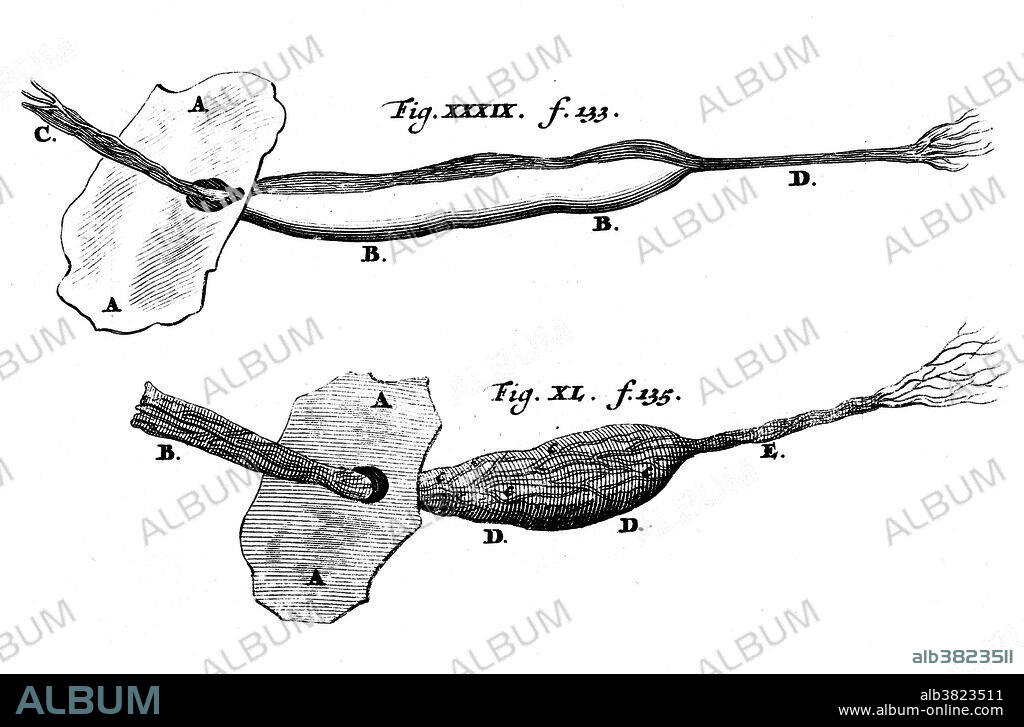alb3823511
Nuck's Canal in Dog and Human, 17th Century

|
Add to another lightbox |
|
Add to another lightbox |



Title:
Nuck's Canal in Dog and Human, 17th Century
Caption:
Nuck's canal in dog and human. Drawn by Anton Nuck in the 17th century. Nuck (1650-1692) was a Dutch physician and anatomist. He pioneered the injection of substances into the salivary glands, discovered the the Nuck's diverticulum, the Nuck canal, and the Nuck cyst, which all bear his name. The canal of Nuck, first described by Nuck in 1691 is an abnormal patent (open) pouch of peritoneum extending into the labia majora of women. It is analogous to the processus vaginalis in males (see hydrocele). In rare cases, it may give rise to a cyst or a hydrocele in women. The pouch accompanies the gubernaculum during development of the urinary and reproductive organs, more specifically during the descent of the ovaries, and normally obliterates.
Credit:
Album / Science Source / Wellcome Images
Releases:
Model: No - Property: No
Rights questions?
Rights questions?
Image size:
3980 x 2621 px | 29.8 MB
Print size:
33.7 x 22.2 cm | 13.3 x 8.7 in (300 dpi)
Keywords:
17TH CENTURY • ANATOMICAL • ANATOMY • ANTHONY NUCK • ANTON NUCK • ART • ARTWORK • CANAL OF NUCK • COMPARISON • DIAGRAM • DRAWING • FEMALE • GROSS ANATOMY • HISTORIC • HISTORICAL • HISTORY • HUMAN • HUMANE • ILLUSTRATION • ILLUSTRATIONS • INDIVIDUAL • MAMMALIA • MAMMALIAN • MAMMALS • MEDICAL • MEDICINAL • MEDICINE • NUCK'S CANAL • NUCK'S • NUCK • PERSON • REPRODUCTIVE SYSTEM
 Pinterest
Pinterest Twitter
Twitter Facebook
Facebook Copy link
Copy link Email
Email

